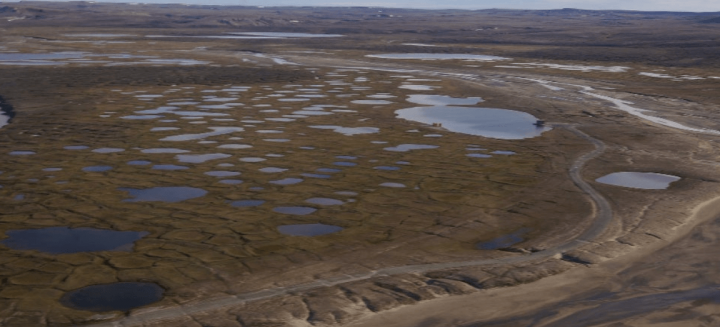By Jan Wesner Childs
Scientists studying climate change expected layers of permafrost in the Canadian Arctic to melt by the year 2090.
Instead, it’s happening now.
A new study published this week in the journal Geophysical Research Letters revealed that unusually warm summers in the Canadian High Arctic between 2003 and 2016 resulted in permafrost melt up to 240% higher than previous years.
Louise Farquharson, a researcher at the Permafrost Laboratory at the University of Alaska Fairbanks and the study’s lead author, told weather.com the three areas of melting permafrost studied in remote northern Canada are believed to have been frozen for thousands of years.
“This change is unprecedented on this kind of time scale,” Farquharson said.
She noted that while scientists had predicted the permafrost wouldn’t melt for another 70 years, those forecasts didn’t take into account the unusually warm summers that have happened in recent years. While researchers believe all indicators point to warmer temperatures continuing, there’s no way to know for sure just how quickly the permafrost will continue to melt.
As permafrost disappears, it creates what’s known as thermokarst, a sinking landscape often pockmarked with lakes, holes and mounds. In one area the researchers studied, the ground sank about three feet.
“I was very surprising to just see how rapidly the landscape changed,” Farquharson said. “We started monitoring these sites back in the early 2000s and this landscape surrounding each of our stations was fairly flat. It was fairly easy to walk across the area.”
The transformation was startling.
“It’s pretty amazing,” Farquharson said. “There are these troughs of up to 90 centimeters (about 35 inches). It’s kind of like the elevation of a kitchen countertop. There are small ponds in many of these troughs. It’s quite a profound change.”
Vegetation never before seen in the area is also creeping in.
Not only is rapidly melting permafrost a harbinger of climate change, it exacerbates the problem by exposing thawing biological material to the atmosphere where it decomposes and releases CO2, a key element in global warming.
Research has also shown that loss of permafrost can wreak havoc on everything from animal habitat, migration and diet in the wild to agriculture and infrastructure in populated areas.
Houses are sinking into the earth in parts of Alaska, Canada and Russia, for example, and the 92-mile road in Alaska’s Denali National Park is slowly being moved by sliding land caused by melting permafrost.
“Locally, these changes, they affect the vegetation, the ecology, the hydrology,” Farquharson explained. “It’s kind of a canary in the coal mine situation I would say.”






